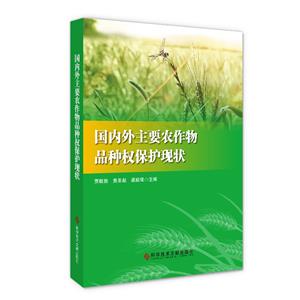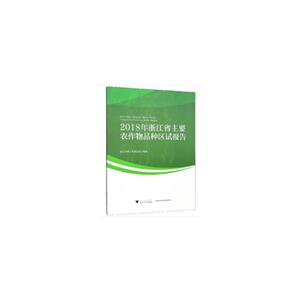
作者:钱加荣著
页数:113页
出版社:中国农业出版社
出版日期:2023
ISBN:9787109311190
电子书格式:pdf/epub/txt
内容简介
本书旨在提出良种增产贡献率科学测定方法,跟踪评价优良品种对农作物单产水平提高的贡献程度,并在研究的基础上提出促进我国农业持续健康发展的政策建议。本研究对丰富和完善良种增长贡献率测算方法,科学衡量我国种业发展水平,提升农业产出水平和竞争力水平等有着重要意义。
目录
PREFACE
ABSTRACT
CHAPTER 1 Introduction
1.1 Background
1.2 Literature review
1.3 Methodology
1.4 Organization
CHAPTER 2 The contribution of seed variety to rice yield increases
2.1 Rice yield changes in China
2.2 Evolution in rice seed varieties in China
2.3 Specification for rice yield model
2.4 Model estimation
2.5 Empirical results
2.6 Summary
CHAPTER 3 The contribution of seed variety to wheat yield increases
3.1 Wheat yield changes in China
3.2 Evolution of wheat seed varieties in China
3.3 Specification for the wheat yield model
3.4 Model estimation
3.5 Empirical results
3.6 Summary
CHAPTER 4 The contribution of seed variety to corn yield increases
4.1 Corn yield changes in China
4.2 Evolution in corn seed varieties in China
4.3 Specification for the corn yield model
4.4 Model estimation
4.5 Empirical results
4.6 Summary
CHAPTER 5 The contribution of seed variety to soybean yield increases
5.1 Soybean yield variation in China
5.2 Evolution in soybean seed varieties in China
5.3 Specification for soybean yield model
5.4 Model estimation
5.5 Empirical results
5.6 Summary
CHAPTER 6 The contribution of seed variety to cotton yield increases
6.1 Cotton yield variation in China
6.2 Evolution in cotton seed varieties in China
6.3 Specification for the cotton yield model
6.4 Model estimation
6.5 Empirical results
6.6 Summary
CHAPTER 7 The contribution of seed variety to rapeseed yield increases
7.1 Rapeseed yield changes in China
7.2 Evolution in rapeseed seed varieties in China
7.3 Specification for rapeseed yield model
7.4 Model estimation
7.5 Empirical results
7.6 Summary
CHAPTER 8 Conclusion and policy recommendations
ABSTRACT
CHAPTER 1 Introduction
1.1 Background
1.2 Literature review
1.3 Methodology
1.4 Organization
CHAPTER 2 The contribution of seed variety to rice yield increases
2.1 Rice yield changes in China
2.2 Evolution in rice seed varieties in China
2.3 Specification for rice yield model
2.4 Model estimation
2.5 Empirical results
2.6 Summary
CHAPTER 3 The contribution of seed variety to wheat yield increases
3.1 Wheat yield changes in China
3.2 Evolution of wheat seed varieties in China
3.3 Specification for the wheat yield model
3.4 Model estimation
3.5 Empirical results
3.6 Summary
CHAPTER 4 The contribution of seed variety to corn yield increases
4.1 Corn yield changes in China
4.2 Evolution in corn seed varieties in China
4.3 Specification for the corn yield model
4.4 Model estimation
4.5 Empirical results
4.6 Summary
CHAPTER 5 The contribution of seed variety to soybean yield increases
5.1 Soybean yield variation in China
5.2 Evolution in soybean seed varieties in China
5.3 Specification for soybean yield model
5.4 Model estimation
5.5 Empirical results
5.6 Summary
CHAPTER 6 The contribution of seed variety to cotton yield increases
6.1 Cotton yield variation in China
6.2 Evolution in cotton seed varieties in China
6.3 Specification for the cotton yield model
6.4 Model estimation
6.5 Empirical results
6.6 Summary
CHAPTER 7 The contribution of seed variety to rapeseed yield increases
7.1 Rapeseed yield changes in China
7.2 Evolution in rapeseed seed varieties in China
7.3 Specification for rapeseed yield model
7.4 Model estimation
7.5 Empirical results
7.6 Summary
CHAPTER 8 Conclusion and policy recommendations















